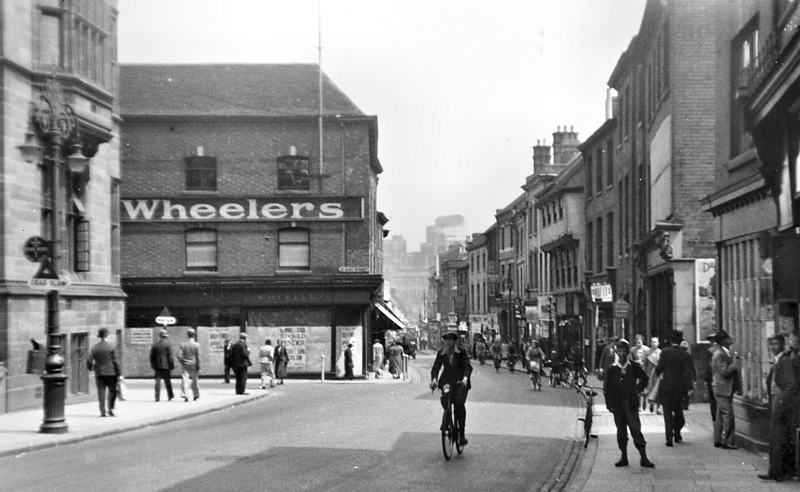This pub was built in 1728 to replace the mediaeval Drapery. It was built opposite St Michael's Church and, having take the place of the drapery, the linen, flannel and cloth fair was moved to St Mary's Hall. For many years the cloth manufacturers of Yorkshire attended the annual Coventry fair and held sales both in the courtyard of St Mary's Hall and in the large room at the tavern.
Many newspaper articles and auction notices, particularly in the late 1700s, gave the location as High Street.
In 1756 six soldiers were billeted here. In accordance with the entertainment of the day, in 1780 the Irish giant, O'Brien, was exhibited at the Half Moon, along with a baboon called the 'Ethiopian Savage', and a cassowary. In a similar vein the City's freemen also had meetings here.
It seems that the Half Moon stood in its own yard, where a row of tenements also stood. It was referred to as 'a principal tavern in the city', which would correspond to its use by the freemen for meetings. On the north side of the tavern was a stone bearing the letters MGP and the date 1728, which commemorated the end of the old drapery. In 1771 a post chaise service was set up from the Half Moon.
As early as 1828 discussions took place as to the dilapidation of the tavern, and it was proposed to create a new street from Half Moon Yard to give splendid views of the churches and old buildings - a proposal that had some opposition, and even plans to completely restore the property. Things did not move quickly, but soon after March 1861 the tavern was taken down to make way for St Mary Street, which still exists running alongside the present Council House. Erected on the site of the tavern were the dwelling for the Superintendent of Police and the fire engine house.
 Earl Street pre-war featuring St. Mary Street on the left. Photo courtesy of David McGrory.
The half moon can be a symbol of love and romance, and also a symbol of hope and new beginnings. |